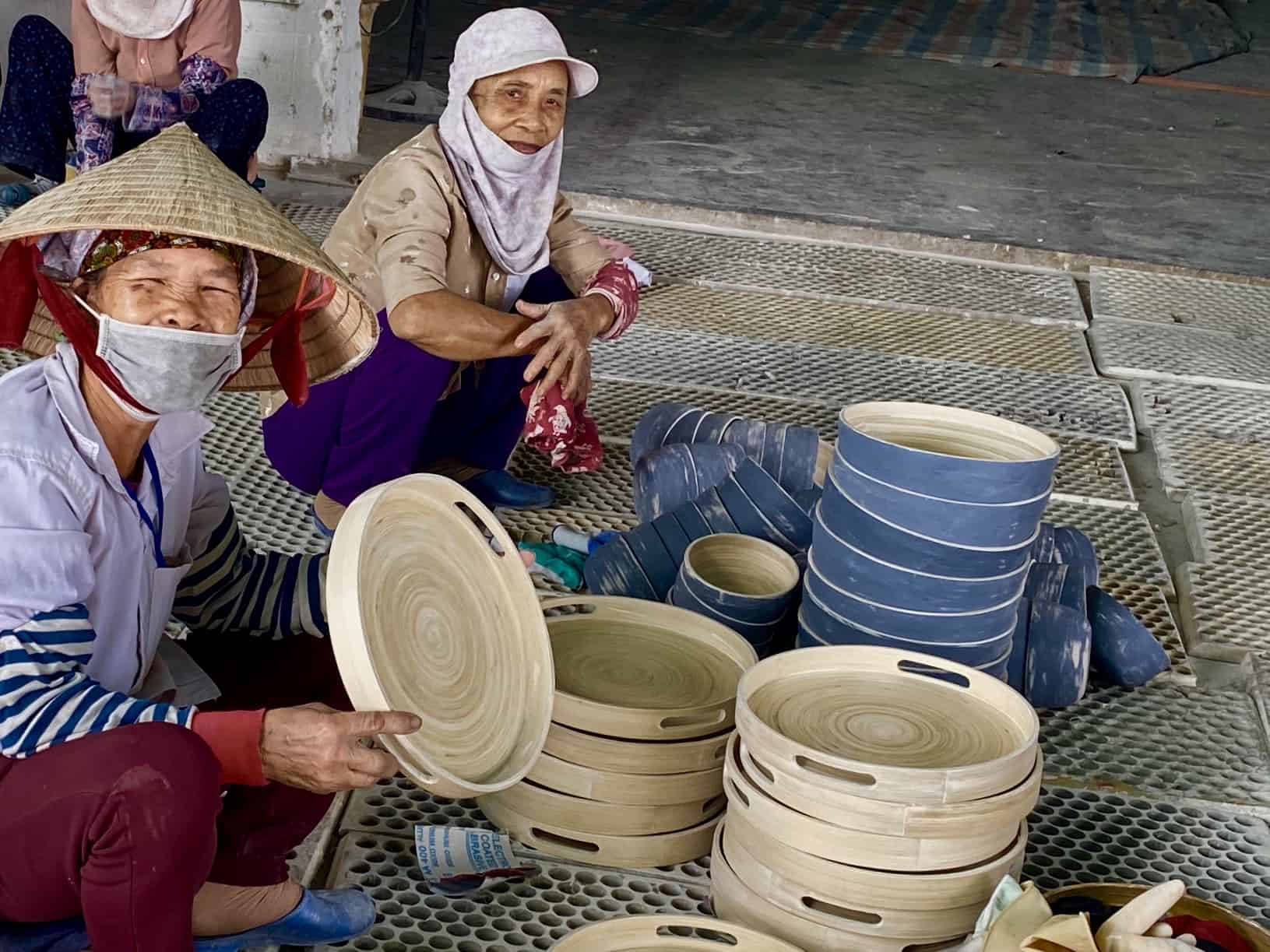Vietnam offers home decor companies a great source of manufacturing home decor products. They have a lot of unique techniques and finishes that other countries and places do not have. Vietnam also does a lot of finishes that are truly 100% handmade. This makes them an excellent choice for many home decor products.
There are many techniques, materials, and finishes that we love in Vietnam, but some of our favorite ones are Vietnamese lacquer, mother of pearl, eggshell, and faux paper finishes. We also do some unique woven rattan and linen techniques. Both spun bamboo, water hyacinth, and seagrass are some great natural looks. Vietnam also offers some amazing ceramic finishes and techniques. And they have thriving outdoor furniture and accessories products in some interesting finishes and techniques.
Table of Contents
- Top 10 Vietnamese Home Decor Finishes and Techniques
- Frequently Asked Questions
- Related Questions
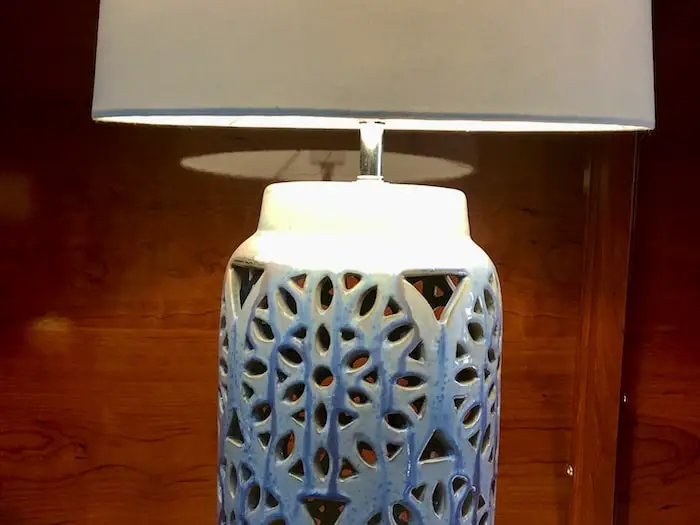
Top 10 Vietnamese Home Decor Finishes and Techniques
Introduction: Vietnam’s rich tradition in home decor is showcased through its diverse array of techniques, materials, and finishes. Among our favorites are the classic Vietnamese lacquer, intricate mother-of-pearl inlays, delicate eggshell applications, and versatile faux paper finishes.
Unique weaving methods involving rattan and linen also stand out, along with the natural appeal of spun bamboo, water hyacinth, and seagrass. Furthermore, Vietnam’s mastery in ceramic finishes adds another dimension to its decorative repertoire.
The country’s outdoor furniture and accessories also reflect a blend of interesting finishes and innovative techniques, making Vietnamese home decor truly distinctive.
Vietnamese Lacquer
The Vietnamese lacquer technique is about 800 years old. But despite the fact it is an ancient technique, it is still a very relevant finish and technique today. Most of the Vietnamese lacquer is done out in the handcraft villages outside Hanoi.
These households that are producing the lacquer have been making lacquer consistently for hundreds of years. This means that the skills have been passed down from generation to generation.
Reasons why we love the Vietnamese lacquer finish:
- Vietnamese lacquer has many layers – Vietnamese lacquer is a layered process. Lacquer can have anywhere from 15 to 28 or more lacquer layers. Each step of the process is usually sanded in between. This helps to give the layer a nice, smooth finish.
- Vietnamese lacquer can be done on various surfaces – Vietnamese lacquer can be done on a variety of surfaces and materials. This makes Vietnamese lacquer very versatile.
- Vietnamese lacquer has endless finishes and color possibilities. The beauty of Vietnamese lacquer is that there are endless finishes and color possibilities. There are so many different ways we can use the lacquer technique and materials to create new and interesting finishes. The craftsmen and women are highly skilled as they have been manufacturing Vietnamese lacquer for so many years.
You can read our blog about How To Manufacture Vietnamese Lacquer? by clicking here.
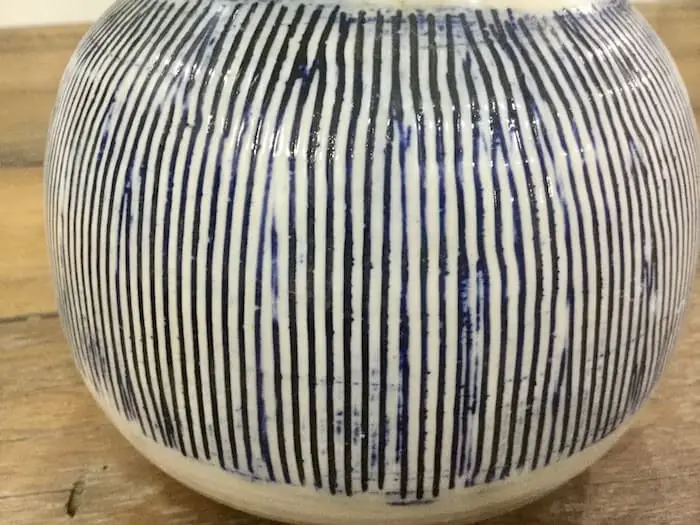
Mother of Pearl
Mother of pearl items are produced in many parts of Asia, but one of the places the artisans are considered experts in this kind of production is in Vietnam, especially in many of the handicraft villages in North Vietnam.
The Vietnamese have been producing the mother of pearl products for hundreds of years. Traditional Vietnamese furniture all uses the mother of pearl inlay in their furniture pieces. Many other traditional objects have also used the mother of pearl.
Over the years, the mother of pearl production has become one of Vietnam’s top handicraft manufacturing.
Reasons why we love the Mother of Pearl finish and technique:
- Mother of Pearl can be cut in various shapes – The Mother of Pearl shell can be cut in various shapes and sizes. This means that the pattern possibilities can be endless.
- Pearl comes in a variety of natural colors – Mother of Pearl comes in a variety of natural colors like white, pink, and abalone.
- Mother of Pearl can be dyed in various colors – Mother of Pearl can be done in a variety of colors. The main colors we dye it in now are blue, green, red, and orange.
You can read our blog called What is the Mother of Pearl Shell Used in Home Decor Products? by clicking here.
Eggshell Finish
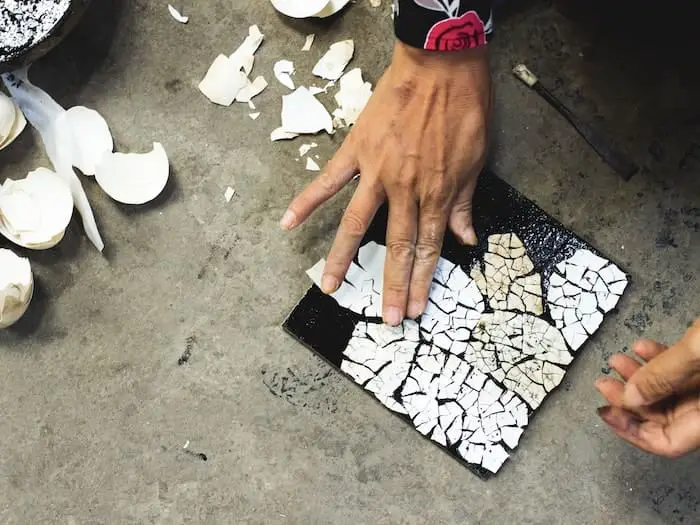
Along with the lacquer and mother-of-pearl finish, the Vietnamese have an eggshell finish, which is literally made out of duck and chicken eggs. Like the other finishes, this is a lacquer finish, and it has many coats and finishes.
Reasons why we love the eggshell finish:
- The Eggshell finish can be done on a variety of surfaces. – The eggshell finish can be done on a variety of surfaces. We can put it on MDF (medium-density fiberboard) ceramic or resin. On any surface we can put Vietnamese lacquer on, we can usually put on the eggshell finish.
- Can burn the eggshells to turn them a brown color – Though the eggshells are normally white, the eggshells can be burned to have a brown color. This can give the eggshell itself some variety in color.
- Can have various layered colors – Though the eggshell itself is usually white or brown, the colors around the eggshell can be an array of colors and finishes. This means that each piece can be unique and exciting.
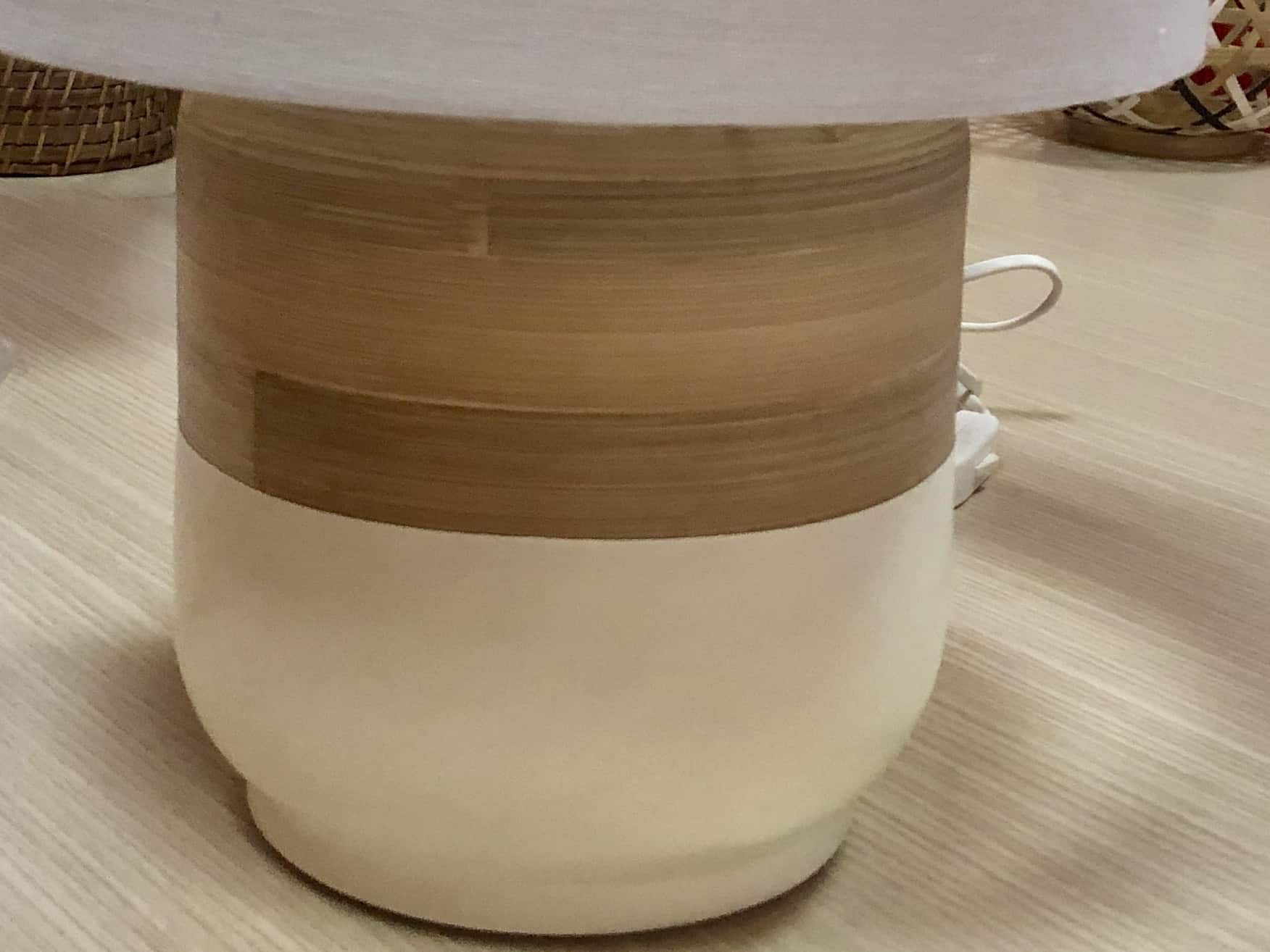
Faux Paper Finishes
We have a technique we invented called a faux paper finish. This technique involves photo paper that is glued on a usually flat medium-density fiberboard (MDF). Once it is placed on the board, we can add gold and silver leaf as needed and then pour acrylic on top.
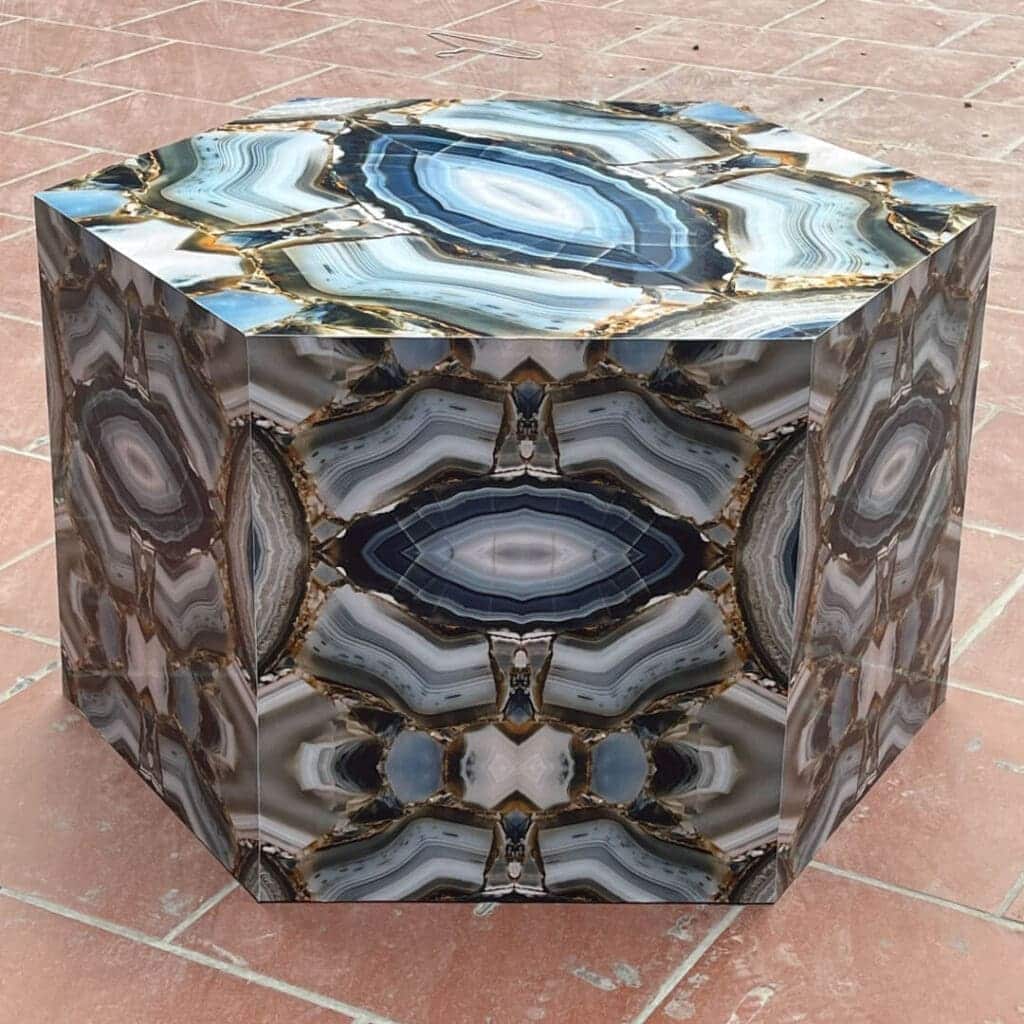
Reasons we love this faux paper finish:
- It looks just like the real thing – As we are using an actual photo paper, the finish looks very real. Most people have a hard time telling the difference.
- We can manufacture a finish that would normally be very expensive or not normally used in manufacturing. – As we are using photo paper, we can photograph an item or material that would normally be very expensive or impossible to manufacture. We have a horn that looks like a real horn or expensive agate stone photos that look real. This allows us to get the look and feel of a finish without the expense.
- Gives consistency – As many natural products are not consistent when used in production, using photo paper helps us to be able to make sure the colors and look have some consistency.
Rattan Woven Finish
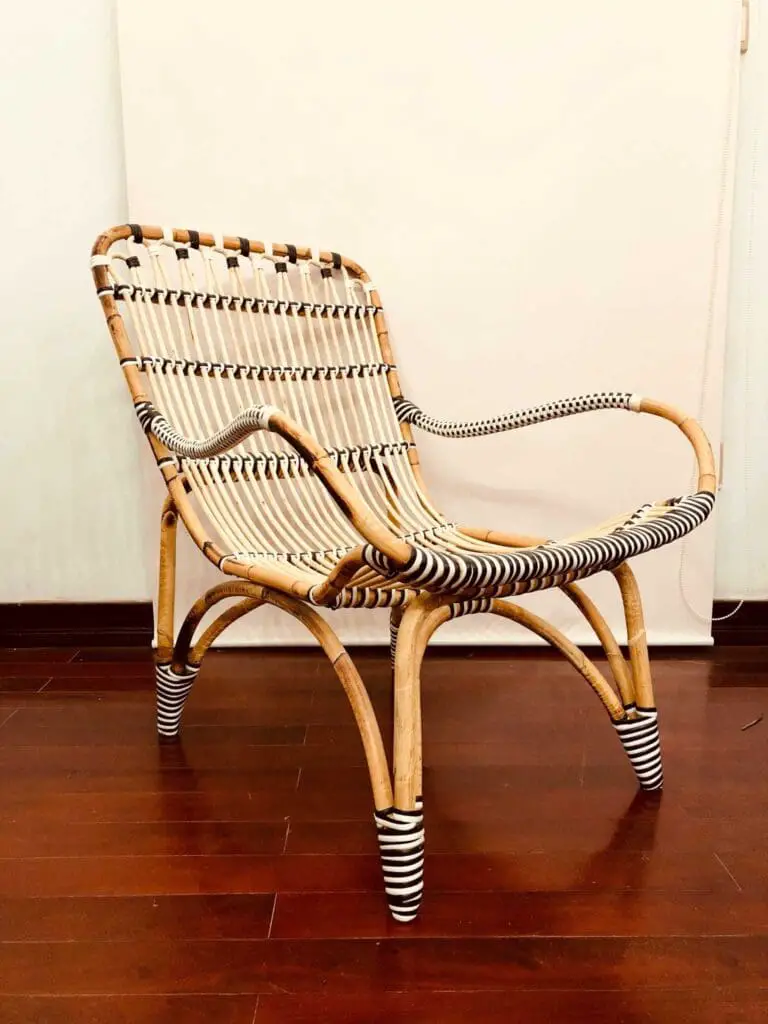
We are using some real rattan and bamboo weaves and gluing them on a surface. This makes for interesting background material for a variety of products.
Reasons why we love this woven rattan technique and finish:
- Gives a natural look – The rattan gives a very natural look as we can leave the color as the natural rattan.
- You can add a finish or color to the rattan. If you do not want a natural look, we can add a finish or color to the rattan. We have put gold or silver leaf on the rattan to add some luster.
- Can be done for various products – The rattan woven finish can be done on an array of products like mirrors, furniture, boxes, trays, and lamp bases.
Linen Wrapped Finish
The linen wrap is a new finish for Mondoro. We do it in two ways: it is a faux kind of linen similar to how we do faux shagreen; the other is that it is an actual linen wrap from a canvas, similar to a canvas or linen used for oil painting.
We love the look of this linen wrap finish. Here are some of the reasons why:
- Linen wrap gives an attractive fabric look – Linen wrap provides a product with an interesting fabric look.
- Linen wrap can be done in various colors – The linen wrap technique can be finished in a variety of colors and finishes.
- Can be wrapped on various products – We can use wrap linen on a variety of products like mirrors, boxes, tables, lamps, or wall art. We can put the rattan wrap on a variety of surfaces and in a variety of ways.
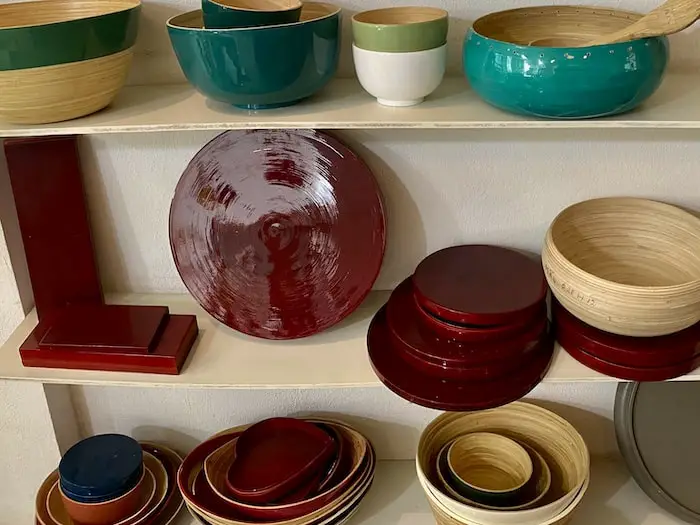
Spun Bamboo
Spun Bamboo is also an 800-year-old Vietnamese technique invented as a cheaper alternative to the available materials. Spun bamboo is bamboo that is split and then glued together and spun in various shapes and sizes.
Reasons we love the spun bamboo look and finish:
- Spun Bamboo gives a natural look – Spun bamboo gives a very nice natural look of bamboo.
- Spun Bamboo is very versatile – Spun bamboo can be used in a variety of shapes and sizes. The items can be substantial, or they can be small. Though round shapes are best, it can also be manufactured in ovals and square shapes.
- Spun Bamboo can be used as a base for other finishes – If you do not want to show the naturally spun bamboo look or finish, spun bamboo can be used as a base for other finishes lacquer, mother of pearl, or eggshell.
You can read our blog on What is Spun Bamboo? Using Spun Bamboo in Product Development by clicking here.
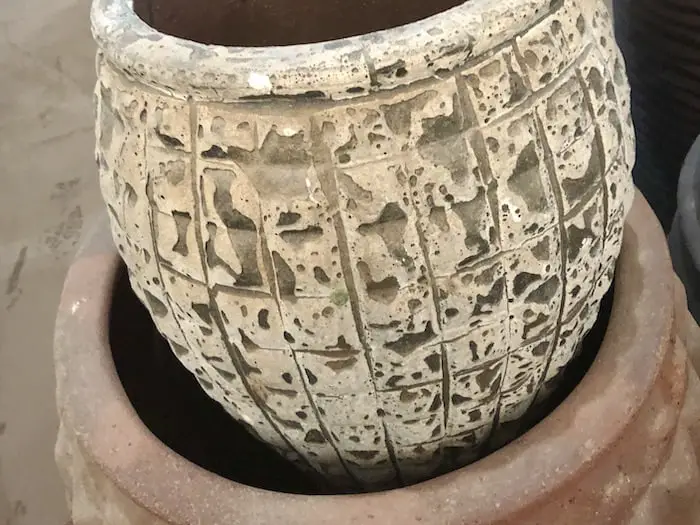
Woven Seagrass and Water Hyacinth
Vietnam also weaves a lot of exciting seagrass and water hyacinth products. The items do not need to be baskets but can be made into lamps, mirrors, boxes, lighting, and wall art.
Reasons we love the seagrass and water hyacinth finish and technique:
- It gives an incredible natural look – Seagrass and water hyacinth can both give a really nice natural look and feel.
- Can be dyed – Both seagrass and water hyacinth can be dyed into a variety of colors. This can give it some excellent versatility.
- Can be painted – Seagrass and water hyacinth can both be painted. But for this to happen, the material must be treated correctly.
You can read our blog entitled About Weaving Water Hyacinth Baskets Into Home Décor Products by clicking here.
Ceramics
Vietnam has a lot of interesting ceramic production. Some ceramics are made in Northern Vietnam in the Ceramic Village outside Hanoi, and others are being done in South Vietnam. Both locations have some exciting finishes and techniques.
Some things we love about Vietnam’s ceramic production:
- Attractive hand-painted finishes – Many Vietnamese ceramic factories are hand-painting many different kinds of ceramics, especially in some North Vietnam factories. Vietnam can do unique hand-painted finishes and techniques that not even China can do.
- Unique glazes – Like the hand-painted finishes, Vietnam also does some interesting glazes. Many of these glazes can have an array of colors on them. This helps to give them some unique and interesting looks and finishes.
- Versatile finishes – One of the things we love about many Vietnamese ceramic glazes is how versatile they can be. The surface does not need to be flat. They can usually also be raised or have some raised techniques.
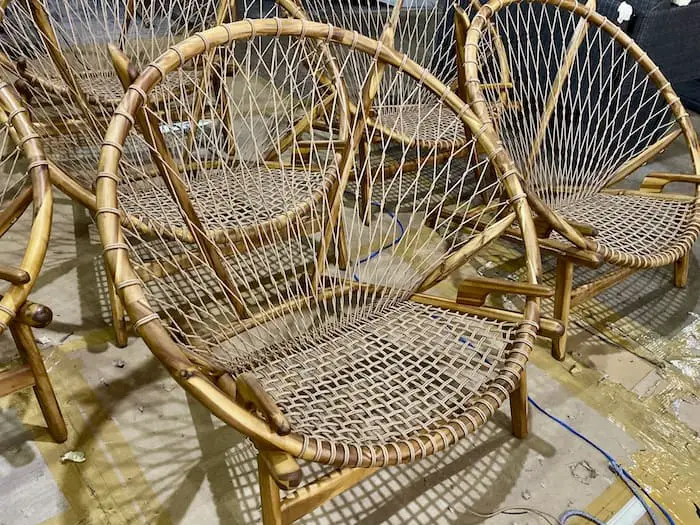
Great Outdoor Finishes
In Vietnam, some factories are doing some great outdoor finishes and techniques.
Some of the techniques we love that are being manufactured for outdoor products:
- An interesting mix of materials – some of the manufacturers can do a fascinating mix of materials. Because of this, many of the outdoor items can also be used indoors.
- Faux finishes that look real – Vietnam has some great faux finishes, so they can be used outdoors but may look real, so they can also be used for indoor decor.
- Great shapes – The outdoor products have some really great shapes and designs. They can do a variety of shapes, looks, and finishes.
For more information on the weaving of faux rattan, you can read our blog entitled Hand-weaving Faux Rattan In Vietnam, What You Need to Know by clicking here.
Vietnam has many really finishes and techniques for home decor product development and manufacturing that we love. This is why manufacturing home decor products in Vietnam is a sound business decision and a great creative choice.
Find out more about how Mondoro can help you create, develop, and manufacture excellent home decor and furniture products – don’t hesitate to contact me, Anita. Check out my email by clicking here or become a part of our community and join our newsletter by clicking here.
Mondoro gives out a FREE Lookbook to anyone interested. You can receive a copy of our latest Lookbook by clicking here.
Listen to our Podcast called Global Trade Gal. You can find it on all major podcast platforms. Try out listening to one of our podcasts by clicking here.
Subscribe to our Mondoro Company Limited YouTube Channel with great videos and information by clicking here.
Frequently Asked Questions
How do you negotiate better payment terms with suppliers?
Payment terms, especially with an overseas supplier, can be difficult. There are many reasons for this, but if you do not pay the supplier, it can be tough for an overseas supplier to get their money back from you. So the relationship is significant to most overseas manufacturers.
Here are a few things you can do to help with this relationship:
Build trust – one of the best ways to build trust is to pay on time and be honest. If you are not honest, then they will never trust you.
Don’t make crazy claims – If you start to claim everything, it will be tough for a manufacturer to trust you. Most good manufacturers will be Ok when a complaint is legitimate. But if you complain about everything, they will consider you very difficult and hard to work with. This will ultimately affect your ability to get some payment terms with them.
Make sure your offer is mutually beneficial – If your offer is not mutually beneficial, most companies do not want to give payment terms or do not see the need to do so. You can do this by either giving them a lot of production volume or giving them an incentive to give you payment terms.
Talk to the right person – Make sure you are talking to the right people when negotiating payment terms. The right person is usually the company owner or main decision-maker. So if you want payment terms, you need to get to know the company owner or main decision-maker. For some larger factories, this can be difficult as there may be many layers between you and the company owner or decision-maker.
What makes Vietnamese products unique in global sourcing?
Vietnamese products are known for their craftsmanship, unique designs, and quality materials. Products like textiles, ceramics, furniture, and handicrafts are particularly notable for their traditional techniques blended with modern aesthetics.
How can I find reliable suppliers in Vietnam?
You can find reliable suppliers through Vietnamese trade fairs, B2B marketplaces, and business directories. Additionally, hiring a local sourcing agent or working with trade organizations can provide valuable insights and connections.
Mondoro would love to be your reliable partner in Vietnam for Home Decor and Homr Furniture – don’t hesitate to contact me, Anita. Check out my email by clicking here or become a part of our community and join our newsletter by clicking here.
What are the key products Vietnam is known for in global trade?
Vietnam is renowned for its textiles and garments, footwear, wooden furniture, handicrafts, electronics, seafood, and agricultural products like coffee and rice.
Are there any language barriers when sourcing from Vietnam?
While Vietnamese is the primary language, many business professionals and suppliers in Vietnam speak English, especially in larger cities and industrial areas. However, hiring a translator or working with a bilingual sourcing agent can be beneficial for smoother communication.
How does Vietnam’s manufacturing capacity compare to other Asian countries?
Vietnam has been rapidly growing its manufacturing capacity, offering a viable alternative to traditional manufacturing giants like China. It is particularly strong in textiles, electronics, and furniture manufacturing.
How do trade agreements affect sourcing from Vietnam?
Vietnam has several free trade agreements, which can offer benefits like reduced tariffs and improved market access. It’s important to understand how these agreements can impact your sourcing strategy and costs.
What are the ethical considerations in sourcing from Vietnam?
Ethical considerations include ensuring fair labor practices, sustainable production methods, and compliance with environmental regulations. Researching suppliers and conducting audits can help in verifying ethical practices.
Mondoro would love to be your reliable and ethical partner in Vietnam for Home Decor and Homr Furniture – don’t hesitate to contact me, Anita. Check out my email by clicking here or become a part of our community and join our newsletter by clicking here.
Related Questions
How Can I Find An Overseas Supplier to Produce My Ideas or Products?
Do you have an idea, and you want to find someone to manufacture your products overseas? Most people are not sure what the next step is or what they should do.
It is not easy to find reliable overseas manufacturers. If it were easy, then everyone would be doing it. But there are some basic steps you can take to find a dependable supplier. This process to locate this dependable manufacturer can include finding a buying agent, attending trade shows, doing some online searches, talking to some trade organizations, and getting a referral from someone in the industry.
You can read our blog about How Do I Find an Overseas Manufacturer to Produce my Product Ideas? by clicking here.
What Is Stronger Rattan Or Bamboo?
Bamboo is more robust than rattan. Some bamboo is known even to have a higher tensile strength than steel; this is why bamboo is used as scaffolding in construction in many parts of Asia. Rattan is a vine that grows in the jungles; when rattan is manufactured into furniture, it can be solid.
You can learn more by reading our blog, What Is Stronger Rattan Or Bamboo? by clicking here.
How Do You Make A Bamboo Lamp Shade? All About Bamboo Lampshades
To manufacture or make bamboo lampshades, you need to 1) properly prepare the bamboo materials, 2) build a metal frame, 3) wrap the metal frame, 4) secure the bamboo onto the metal frame, 5) spray color on top of the bamboo shade if you desire the lampshade to be a color other than natural and 6) spray a top coat on the entire shade to protect the bamboo shade’s finish.
You can read our blog about How Do You Make A Bamboo Lamp Shade? All About Bamboo Lampshades by clicking here.

